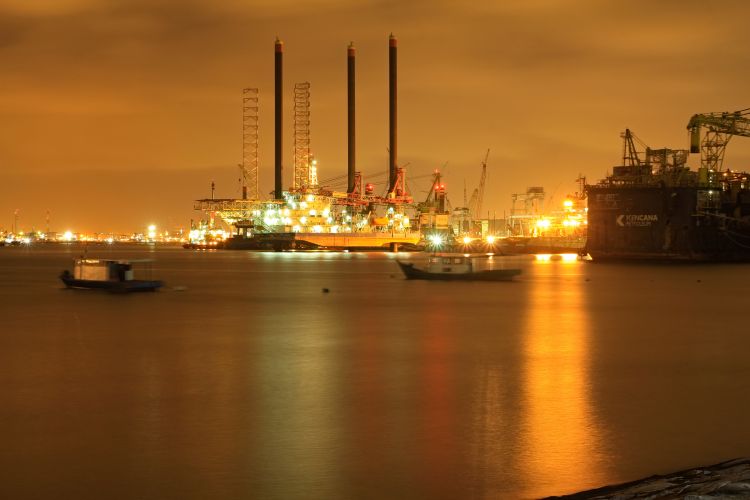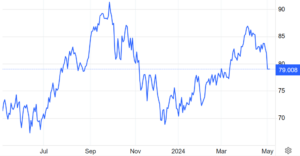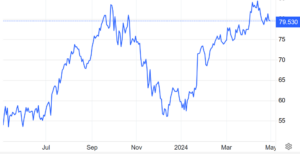
Indian Oil Corporation is experiencing a sharp decline in profits despite accessing discounted Russian crude oil. IOC saw its consolidated net profit plummet by 49.3% to Rs 5,149 crore from Rs 10,290 crore in the same quarter last year. In contrast, rival Reliance’s Q4FY24 revenue from its oil and gas (exploration and production) segment surged by 42% year-on-year to Rs 6,468 crore, primarily due to higher volumes.
The drop in IOC’s net profit in Q4 could be attributed to reduced gross marketing margins on petrol and diesel. According to a report by Motilal Oswal, margins for petrol and diesel shrank to an average of Rs 8 and Rs 3.4 per litre, respectively, during the quarter. Additionally, oil marketing companies were impacted by a fuel price cut of Rs 2 since March 15, which compressed retail margins.
READ | Govt plans IBC revision to tackle climate change-related bankruptcies
Profits plummet despite cheap Russian crude
The decline in profits comes amid an influx of cheap Russian oil into India, which has significantly boosted the annual net profit of OMCs by 268% to Rs 43,161.15 crore in FY24, up from Rs 11,704.26 crore in FY23. However, the core profitability for refiners hinges on the refining margin—the difference between the purchase price of crude oil and the selling price of refined products like petrol and diesel. For FY24, IOC reported a weakened average gross refining margin (GRM) of $12.05 per barrel, a stark decline from the $19.52 per barrel in the previous year.
Most state-run OMCs are facing declining GRMs due to high crude prices amid geopolitical tensions and stagnant demand for products like diesel. This combination has eroded refining margins further.
Crude oil prices WTI ($ per barrel)

Urals crude oil price ($/ barrel)

The weakening of GRMs not only impacts the financial health of refiners like IOC but also has broader economic implications. Lower refining margins could lead to reduced capital expenditures in the oil sector, which in turn may affect job creation and technological advancements in the industry. Furthermore, diminished profitability may compel oil companies to pass higher costs onto consumers, potentially inflating fuel prices and contributing to overall inflationary pressures. This scenario could undermine economic stability, particularly in a developing country like India, where energy costs significantly influence the general cost of living and industrial competitiveness.
The situation has been aggravated by a recent surge in crude oil prices triggered by geopolitical tensions. Despite a brief dip in March, prices have risen by 16% in the first quarter of 2024, fuelled by tighter supply, shipping risks, and attacks on Russian energy infrastructure.
Meanwhile, India has overtaken China as the leading importer of Russian oil. In April, India’s imports of discounted seaborne Russian crude climbed by 12% month-over-month to a nine-month high, as per early ship tracking data and statements from industry officials. In fact, India’s purchases surpassed China’s by 450,000 barrels per day, according to data from the market intelligence agency Vortexa.
Refining margins are normalising
The significant reduction in IOC’s average gross refining margin also reflects a global adjustment. In 2022, supply disruptions and high demand pushed GRMs to record highs. However, with the increased availability of cheaper crude and a more balanced market in 2023, GRMs have normalised.
Despite previous losses, OMCs have regained profitability, reporting a combined profit of Rs 69,000 crore in FY24 up to the third quarter (October-December). This marks a significant recovery from a combined net loss of Rs 21,201.18 crore during April-September 2022. The three major state-owned OMCs—Indian Oil Corporation, Bharat Petroleum Corp Ltd (BPCL), and Hindustan Petroleum Corp Ltd (HPCL)—control approximately 90% of India’s fuel market.
In response to these challenges, Indian oil companies are exploring various strategic measures to bolster their refining margins and overall financial resilience. These strategies include optimising refinery operations, investing in more efficient technologies, and diversifying their product mixes to include more high-margin products. Additionally, companies are looking to expand their global market reach by exporting refined products to regions with higher demand. By enhancing operational efficiencies and tapping into new markets, Indian refiners aim to mitigate the adverse effects of volatile crude prices and geopolitical uncertainties.
Indian OMCs are anticipated to achieve a gross marketing margin of Rs 5 per litre on petrol and Rs 1 per litre on diesel, as estimated by domestic brokerage firm Prabhudas Lilladher. However, considering marketing costs ranging from Rs 1.8 to Rs 2 per litre, the firms are expected to incur losses on diesel. Despite these challenges, the period has been dubbed the golden age of refining by some, driven by historically high marketing margins, according to Prabhudas Lilladher, a financial services company. However, prolonged crude oil imports may lead to a market glut.

